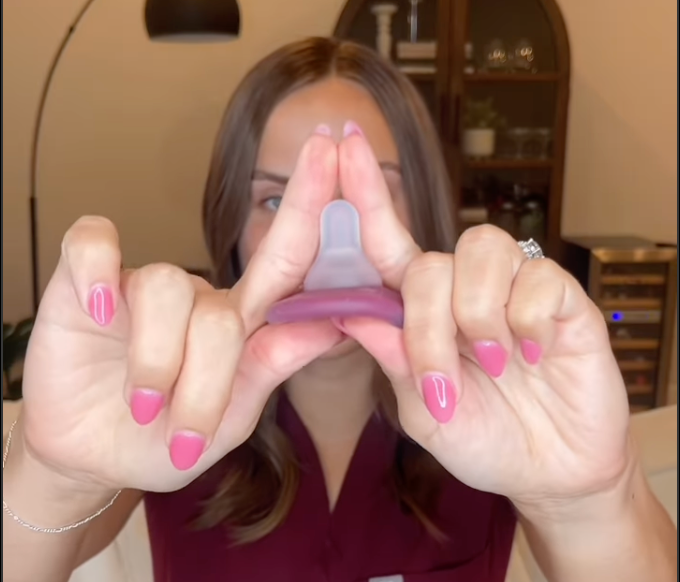A frenectomy is a procedure used to revise tongue-ties and lip-ties. A revision of tethered oral tissues can present a significant positive turning point in an infant's feeding journey, especially for a baby struggling with breastfeeding. Dentists, International Board Certified Lactation Consultants (IBCLCs), and other professionals often work together to manage these challenges. Utilizing tools like the mōmi bottle to support infant feeding, both before and after the procedure, can be very helpful. Professionals emphasize the importance of individualized care pre and post-frenectomy.
Pre-Frenectomy Challenges
Before a frenectomy, infants with class 2-4 frenula often struggle with inefficient sucking, incomplete milk transfer, and prolonged feeding times due to restricted tongue or lip movement. This can slow weight gain, increase maternal nipple pain and damage, and create emotional distress for both mother and baby. For example, a baby with a class 3 lip and tongue tie can have difficulty drawing the milk from the breast and can damage the nipple significantly. In this scenario, both mom and baby are unhappy, mom has a significant risk for infection, the baby has a significant risk because he/she is hungry and not growing well, and breastfeeding is at risk of being terminated. It would be reasonable to recommend that the mother pump and bottle feed her milk until revisions of the tethers can be done. When the proper bottle is chosen in a circumstance like this, the breast feeding relationship is preserved because the baby's abilities are nudged forward toward effective feeding while they wait. With the appropriate mōmi bottle use, bonding can progress, healing for mom can progress, baby can gain weight, and the baby’s tongue can begin to learn to suck in the manner that makes breastfeeding effective, thus the risk factors for terminating breastfeeding are minimized while they wait for oral revisions. Professionals recommend using the mōmi bottle pre-procedure to help babies strengthen their oral mechanics, as its design encourages the tongue to move similarly to breastfeedingThe suitability of the mōmi bottle before a frenectomy depends on the infant's specific challenges and goals. For example, if an infant demonstrates sufficient range of motion and strength, using the mōmi bottle can foster muscle engagement and prepare the infant for the forthcoming revision procedure, thus aiding in developing proper function moving forward.
Post-Frenectomy Recovery with Professional Guidance and Individualized Care
After a frenectomy, proper wound care and feeding practices are crucial to prevent reattachment and optimize healing and oral function. This period requires careful attention to the infant's changed oral environment and potential sensitivities. Dentists, IBCLCs, and other specialists offer comprehensive support that includes techniques to improve latch, strategies to ease the transition between breast and bottle, and frequent monitoring of the infant's feeding progress. This collaborative approach ensures that each infant's unique needs are met, facilitating a smoother recovery and promoting a more successful feeding experience overall. The collaboration also includes recommending an appropriate bottle, if one is needed. The decision to use the mōmi bottle and the timing of its introduction are based on careful assessment of the infant's oral movement, flexibility, and the overall feeding ability.
If the baby needs to bottle feed during the post-frenectomy healing time, dentists and IBCLCs recommend the mōmi bottle for its breast feeding - like design. The mōmi bottle's unique features make it an excellent tool for post-procedure recovery. Its soft but firmer and stretchy nipple encourages the correct peristaltic movement of the tongue and creation of intraoral negative pressure, which are essential for strengthening and retraining oral muscles after the frenectomy. Thus, it contributes to better oral facial muscular balance and supports the goal of building up to, returning to, or continuing successful breastfeeding.
Because it functions quite similarly to breastfeeding, it also helps a baby transition back and forth between breastfeeding and bottle feeding when the healing season is completed. This is very important for moms who are returning to work and can’t always feed their baby at the breast.
Conclusion
Navigating the challenges associated with frenectomies requires a nuanced approach, blending professional expertise with the right feeding tools. The mōmi bottle emerges as a significant support mechanism for its functional design and for the way it complements professional treatment plans. By addressing the specific needs of each infant, healthcare providers can use the mōmi bottle to support oral development, facilitate healing post-frenectomy, and help maintain the breastfeeding relationship.
The use of specialized feeding tools like the mōmi bottle can offer a beacon of hope for families navigating the complexities of infant feeding challenges, particularly in the context of tongue-ties and lip-ties. As research continues to unfold, so too will the strategies employed to ensure infants can feed effectively and parents can find relief and confidence in their feeding journey.
References for Further Reading
Edmunds J, Miles SC, Fulbrook P. "Tongue-tie and breastfeeding: a review of the literature." Breastfeed Rev. 2011;19:19-26.
Ghaheri BA, Cole M, Fausel SC, Chuop M, Mace JC. "Breastfeeding improvement following tongue-tie and lip-tie release: a prospective cohort study." Laryngoscope. 2017;127:1217-1223.
“Navigating Post-Frenectomy Wound Care” on Decisions in Dentistry. (https://decisionsindentistry.com/article/navigating-post-frenectomy-wound-care/)
Mary Enger, IBCLC is founder of Pikes Peak Lactation in Colorado Springs. Jessika Martin, DDS is founder of Thrive Growth & Development in Colorado Springs. Alex Vargas, CLC is a member of the Thrive Growth & Development team. The authors work together as members of an interdisciplinary team to support infants facing a range of feeding challenges.



